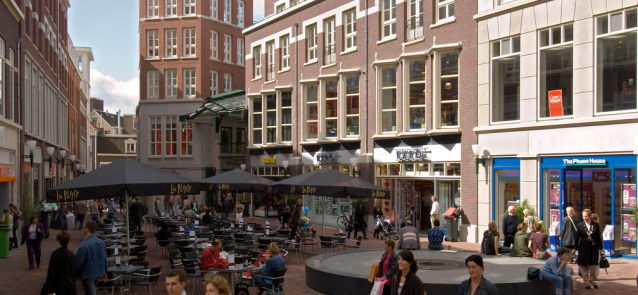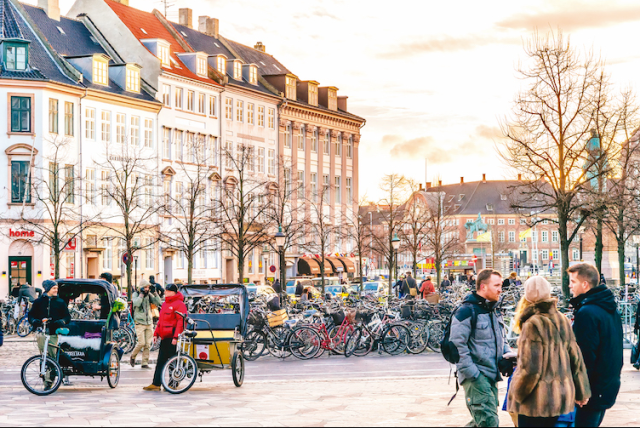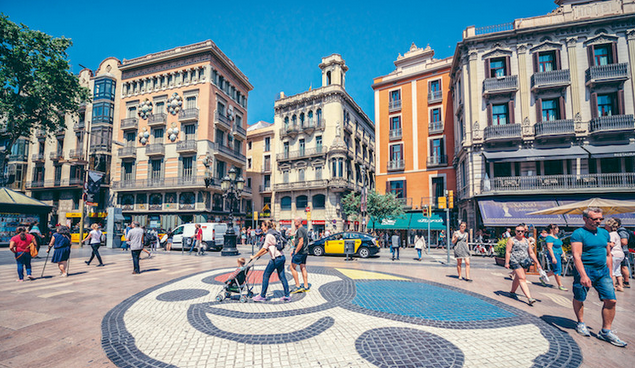
A human-scale plaza, the Musiskwartier (museum quarter), in the city of Arnhem, Netherlands, formed of buildings designed by the firm of Robert A.M. Stern Architects. (RAMSA)
ArchDaily has interviewed Jan Gehl, the noted Danish designer and theorist of placemaking. The article, “In the last 50 years, architects have forgotten what a good human scale is,” suggests that Gehl’s thinking, for all its merit, has not truly evolved to embrace much of what we know and have long known about “good human scale.”
His starting point makes a lot of sense.
In the old metropolis, everything was made to a suitable size for a person, but after the introduction of modernism and the automobile, the importance of this scale was forgotten. We went from having architecture suited to the travel speed of 5 kilometers per hour, to entire cities of 60 kilometers per hour, which meant wider streets, bigger advertisements, higher buildings, where we weren’t able to see anything in detail as we moved so fast.
So, modernism and “motorism” confused a lot of architects and planners about what was a comfortable scale for human beings.
But modernism’s sins against human scale should not be totally fobbed off on the car. Modernists did not develop an architecture that pays no attention to the lower registers of scale just because cars go by too fast for people to notice smaller details. Modernists’ criminalization of ornament precluded embellishment that makes buildings interesting to view from close up at a walking place, and did so before cars replaced walking as the dominant transportation mode in cities. Modernism cares only for medium and large scale and nothing for small scale, the most intimate and humane scale.
Gehl considers himself a follower of Jane Jacobs, but while Jacobs may not have been critical of urban renewal because of its generally modernist style, her preference for traditional styles is implicit in her entire thinking. She recommended that cities foster small blocks lined with more rather than fewer buildings. That suggests a strong preference for traditional buildings because they tend to be smaller, with far more stoops for people to sit on, monitoring their neighborhoods. And she urged that such blocks retain older buildings because older buildings help out entrepreneurs unable, initially, to afford rents in newer buildings or the cost of building them anew.
So while the interviewer may not have asked Gehl about whether traditional or modern architecture better fosters human scale, or may have suppressed the subject altogether, the answers printed suggest – as I have pointed out (see “Placemaking under siege“) – that Gehl has not yet acknowledged that traditional design is intrinsic to human scale and effective placemaking.
It is fair to ask where great places are found amid urbanism framed by modern architecture. I don’t think Jan Gehl would be capable of identifying any such places. The cities he mentions in the interview are historic cities, and the photographs used with his interview are of traditional plazas. They are below. I chose the plaza on top because of its recent vintage, in 2006, by RAMSA, the architecture firm founded by Robert A.M. Stern. Until the great placemaker acknowledges the implication of these visual cues, his work will remain incomplete and difficult to fully rectify with his own goals.






It’s good thing that the Campanile of St. Marks collapsed when it did, so it could be rebuilt com’era, dov’era. Otherwise that last photo might have featured something like this
LikeLike
A good thing indeed, Peter! Isn’t that actually the design for an unbuilt Soviet war memorial?
LikeLike
Tatlin’s proposed monument to the Third International, and an inspiration to Modern Architects everywhere.
LikeLike
Placemaking not peacemaking, of course, in my email intro to this blog post. Idiot spellcheck strikes again!
LikeLike